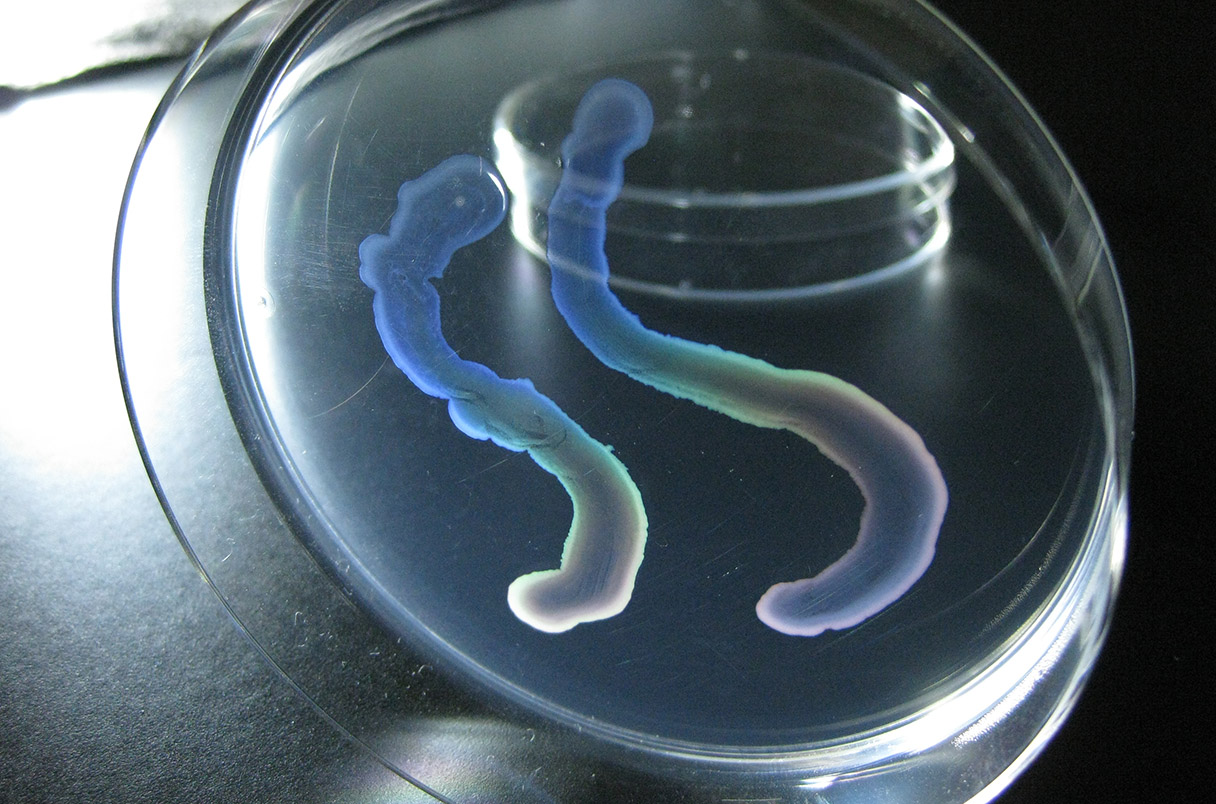
A newly described bacterium is shaking up what it means to be a complex organism. The bizarre microbe, found by Japanese ecologists seeking biodegradable plastics, starts out as a single cell. But instead of remaining a single cell like most microbes, it then develops an organized body comprised of hundreds of cells. When the time is right, the cellular conglomeration shoots out a new generation of single cells to start this multicellular life cycle anew, acting much like plant that grows and produces seeds or a human that gives birth to babies.
The work “opens up a new lens to explore a new form of multicellularity,” says William Ratcliff, an evolutionary biologist at the Georgia Institute of Technology who was not involved with the work.
The appearance of multicellular organisms was a key evolutionary advance for life on Earth. It allowed creatures to develop cells with specialized roles, grow larger and exploit more of their environment. Plants and animals are the textbook examples of multicellular life, but some microbes, too, exhibit a few simple aspects of group behavior. For example, microbes called cyanobacteria form complex chains of cells. And under stress, single-cell Myxococcus bacteria come together to form a mobile, stalked fruiting body, allowing them to move in search of better conditions.
Kouhei Mizuno wasn’t looking for more examples of such microbial complexity when he collected a bacterium denoted “HS-3” from a cave on Kyushu, an island off southern Japan 17 years ago. The microbial ecologist from Japan’s National Institute of Technology and his colleagues had been collecting microbes from extreme environments, such as hot springs and caves. They hoped to find new enzymes that could be used to make biodegradable plastic. When he grew HS-3 on a lab dish, its unusual iridescent sheen suggested it was no ordinary microbe.
Mizuno and colleagues found that once individual HS-3 cells landed on a surface, they began to divide into long filaments. These strands form a long chain that folds (see video, above) and form a colorful, 2D array, akin to the liquid crystals found in cellphone and other electronic screens. No other microbe is known to do this. After about 5 days, the flat sheet began to thicken as a glob of opaque, rod-shaped cells accumulated. When immersed in water, these cells shot out of the microbe’s amassed “body” (see video, below), ready to start a new colony, the team reported this month in eLife. The rod-shaped cells “made me feel as if I encountered an alien worm in a sci-fi movie,” Mizuno recalls.
Unlike other known forms of multicellular bacteria, HS-3 didn’t just have different kinds of cells; each type had a distinct structure and formed at different points in its life cycle, as if responding to specific environmental cues—in this case, submersion in water. For a microbe, “these details are quite peculiar, says Marco La Fortezza, an evolutionary biologist at ETH Zürich who was not involved with the work.
Yet its lifestyle follows a certain logic, Mizuno points out: HS-3 was collected from a wall above an underground stream. On that wall, it can form its body and accumulate its rodlike cells. Then, when rain causes the stream to rise and flood over its body, these cells are released and disperse out into the environment.
“It’s an intriguing sort of organism,” says Paul Rainey, an evolutionary geneticist at the Max Planck Institute for Evolutionary Biology. “I’d like to know much more about it.” But he and others aren’t convinced HS-3’s multicellularity is on par with a human, a pine tree, or even a jellyfish.
“The term ‘multicellularity’ is not well defined,” explains Katrin Hammerschmidt, an evolutionary biologist at the Christian Albrecht University of Kiel, so it’s hard to say whether HS-3 qualifies. In her mind, the cells of a true multicellular organism can only survive and reproduce as part of a larger organism—which isn’t the case for HS-3. And she and others stress that multicellular larger organisms must be sensitive to natural selection. Thus, to her, “The cave bacterium is another example for a prokaryote with a transient multicellular stage.”
Ratcliff admits HS-3’s status is up in the air. “There’s multicellular,” he says, “and [then] there’s multicellularity, where the group of cells becomes the evolutionary unit.” It’s clear this bacterium is multicellular, but more studies are needed to demonstrate its multicellularity, he, Rainey, and Mizuno say.
Regardless, the researchers all agree that HS-3’s discovery provides strong evidence for the role of the environment—in this case, flooding—in encouraging the evolution of complex organisms. “The more different examples we discover and analyze,” Hammerschmidt says, “the more we learn about the origin and maintenance of multicellularity.”
Credit : https://www.science.org/content/article/odd-cave-bacterium-forms-multicellular-body-plants-and-animals?utm_medium=ownedSocial&utm_campaign=NewsfromScience&utm_source=Facebook&fbclid=IwAR0xIv1cdIRuJ6-yrojlQFNHv6uydPOt_U3_UBCOdHqqMwvd07Phh1fhAOI

